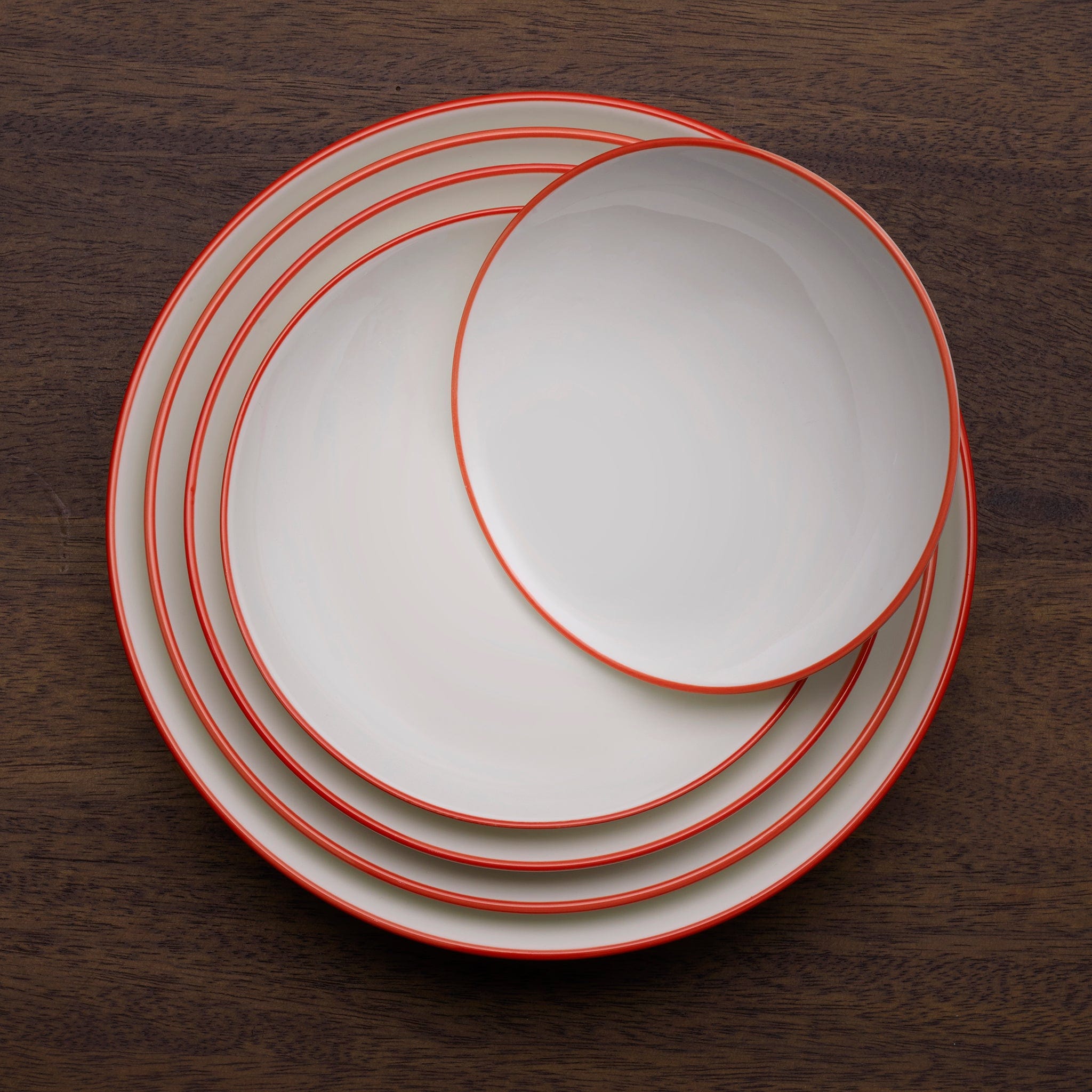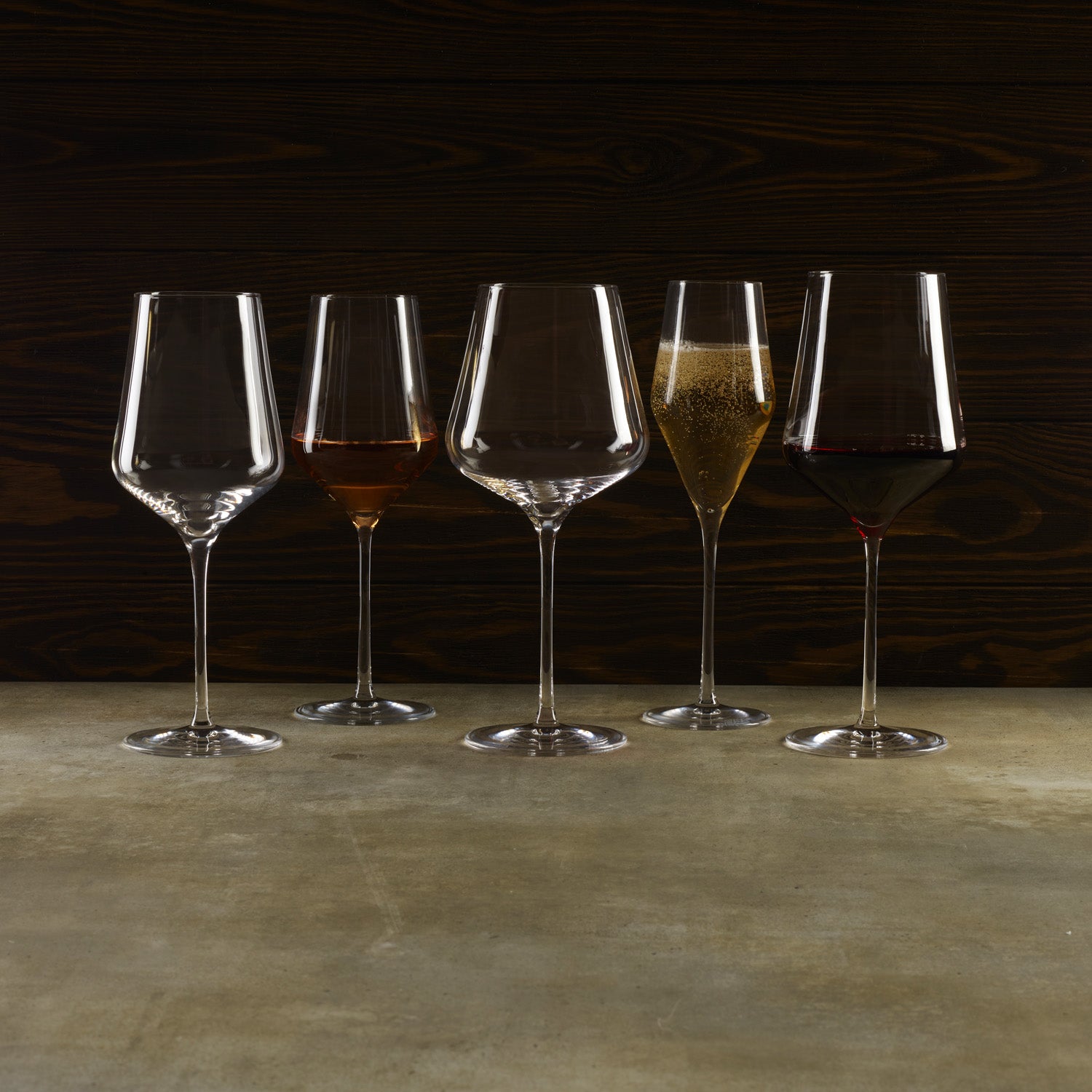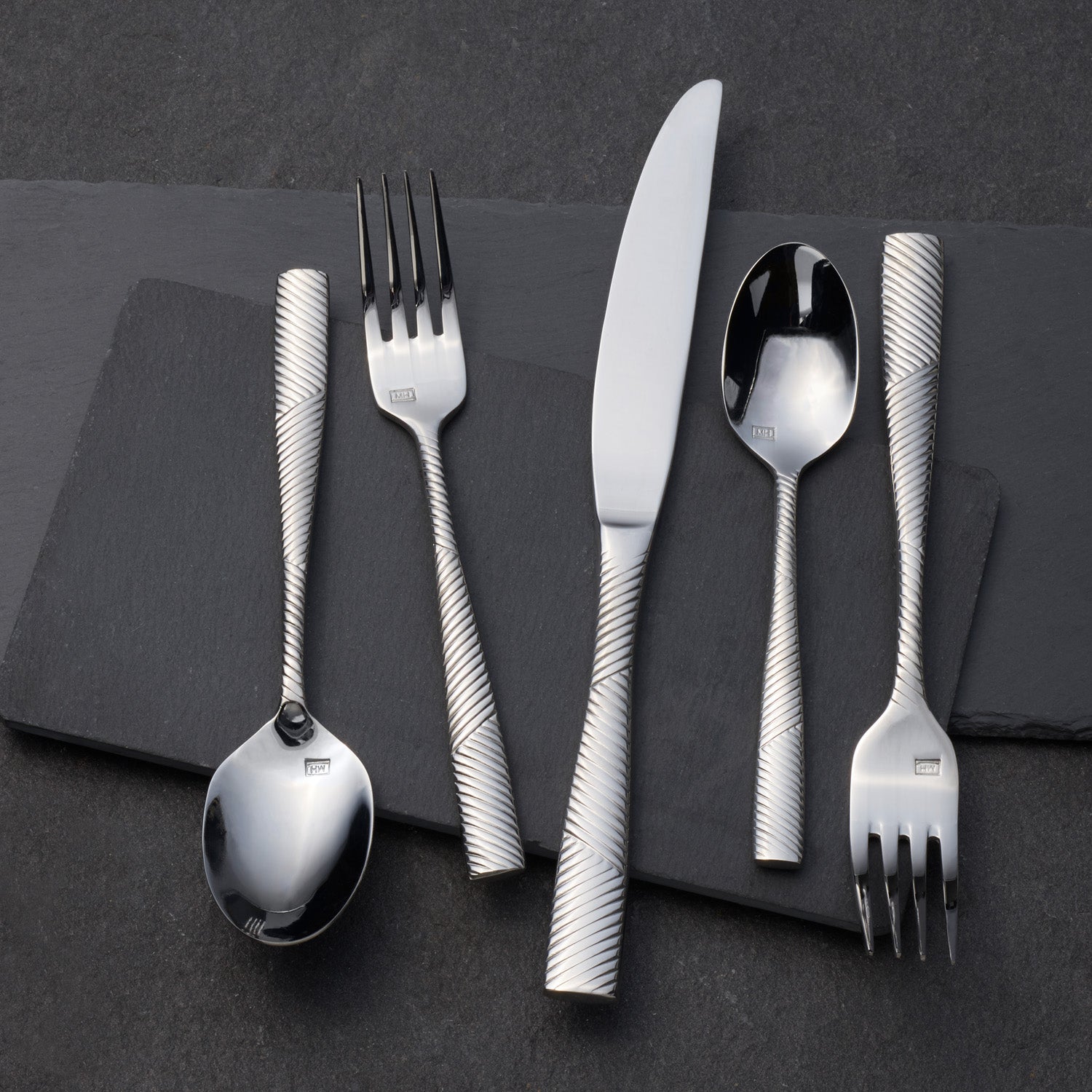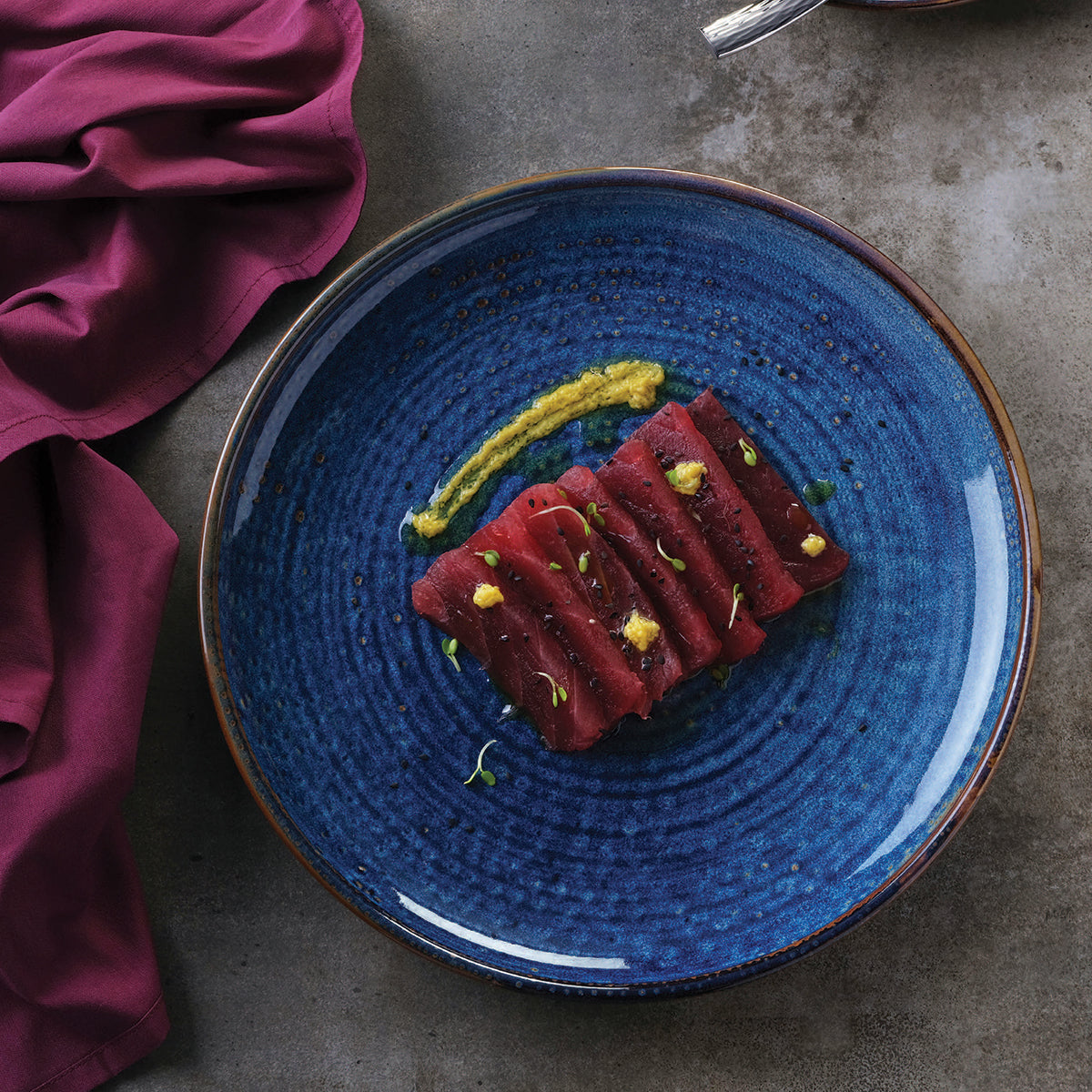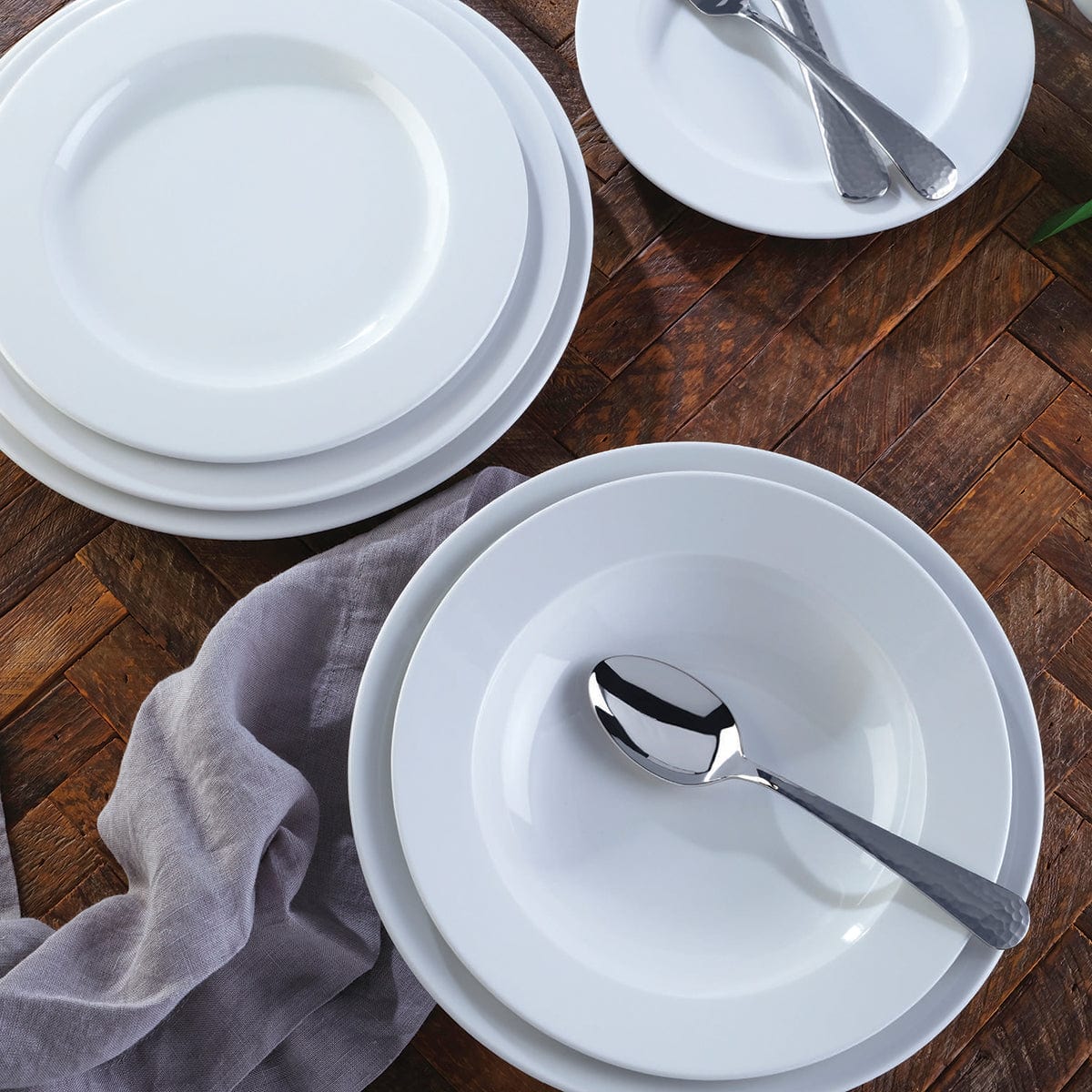
Washing:
Use of a pre-soak solution can cause a chemical reaction with the china's glaze, which will etch the surface. Once etching occurs, the surface is more susceptible to glaze abrasion, metal marking and food staining.
Never use a scouring pad or powder to remove stains.
When placing dishes in a dish rack, separate china from stainless steel and glassware to avoid metal markings and excessive breakage of glassware.
Always wash soiled china within 30 -45 minutes after use.
Utilize solid plastic racks for washing and storage. Do not use plastic covered metal racks.
Always store china in active use away from or above the food preparation area.
Always pre-rinse with 110°- 120°F water.
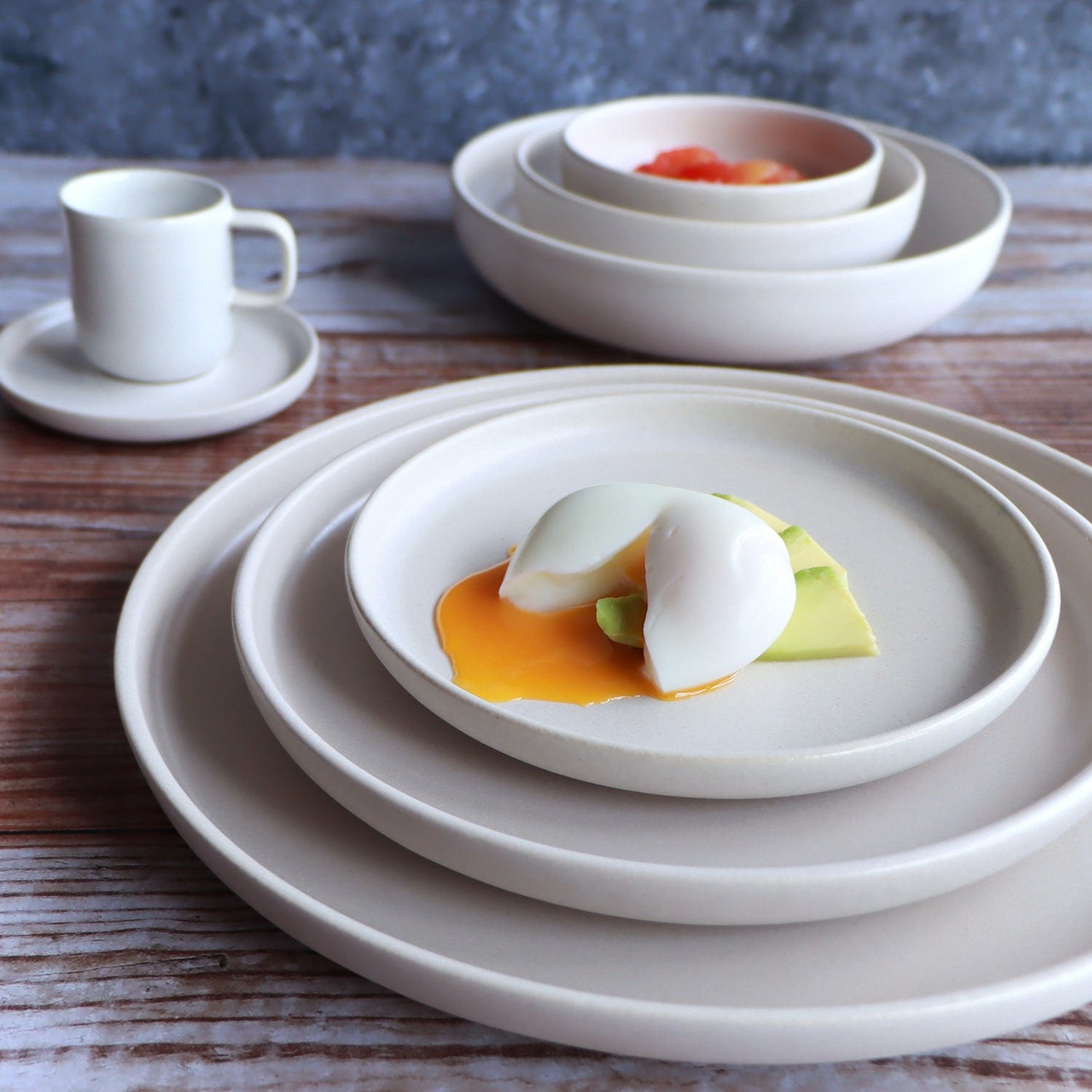
Handling:
Always scrape and rack soiled china immediately after use.
Avoid stacking soiled china. If a backlog does occur, stack by item no more than 12 pieces high.
Never allow soiled dishes to stand overnight.
Washing:
Use of a pre-soak solution can cause a chemical reaction with the china's glaze, which will etch the surface. Once etching occurs, the surface is more susceptible to glaze abrasion, metal marking and food staining.
Never use a scouring pad or powder to remove stains.
When placing dishes in a dish rack, separate china from stainless steel and glassware to avoid metal markings and excessive breakage of glassware.
Always wash soiled china within 30 -45 minutes after use.
Utilize solid plastic racks for washing and storage. Do not use plastic covered metal racks.
Always store china in active use away from or above the food preparation area.
Always pre-rinse with 110°- 120°F water.
Handling:
Always scrape and rack soiled china immediately after use.
Avoid stacking soiled china. If a backlog does occur, stack by item no more than 12 pieces high.
Never allow soiled dishes to stand overnight.


Stainless Steel Flatware
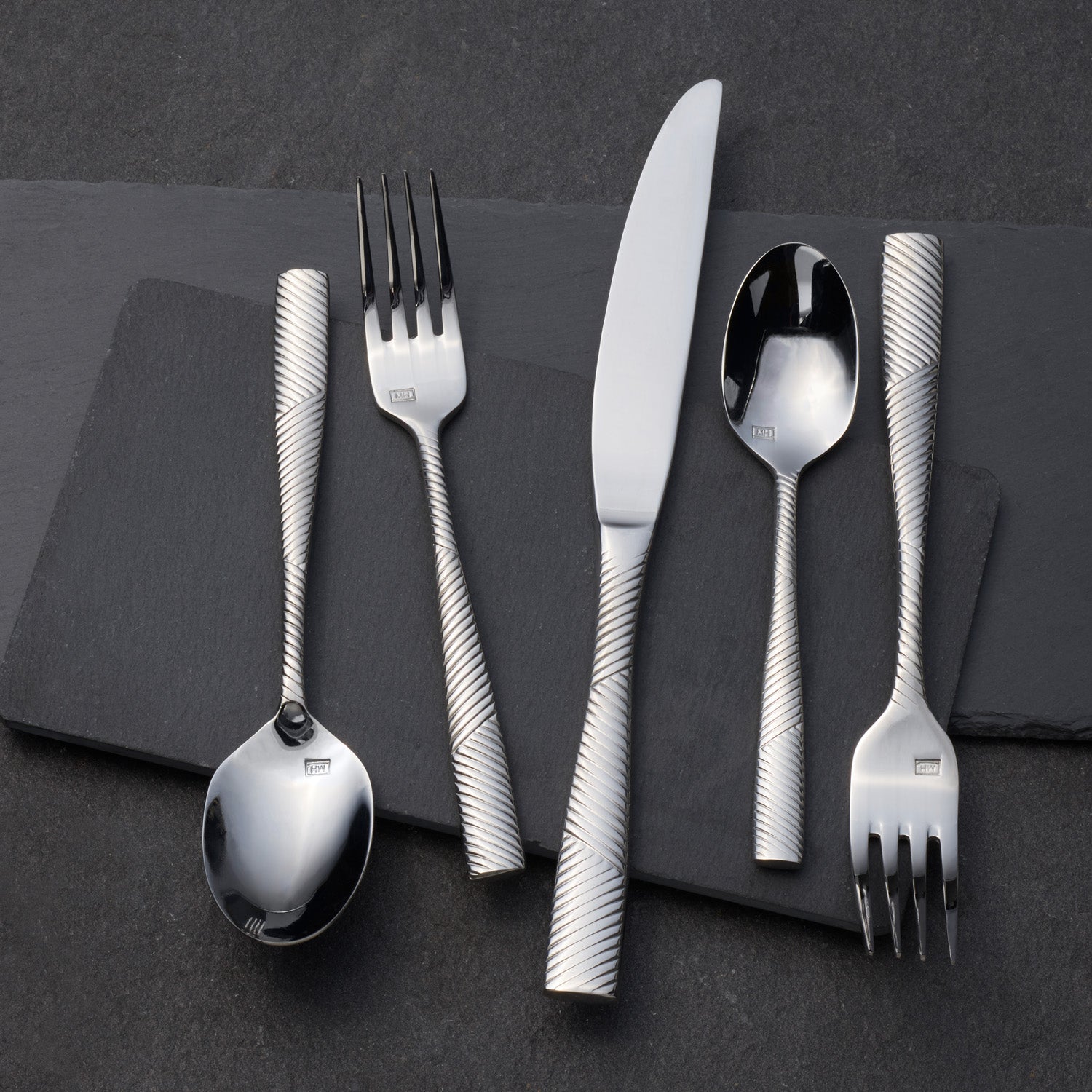
Rinsing + Washing:
Remove all remnants of food from flatware immediately after use. Avoid using steel wool or metal scrapers.
Do not soak flatware for a prolonged period of time or overnight.
Keep knives separate with the blades pointed down.
Avoid low-temperature dishwashing. It is not suited for stainless flatware.
Always make sure your flatware is clean and dry before storing to avoid corrosion and oxidation marks.
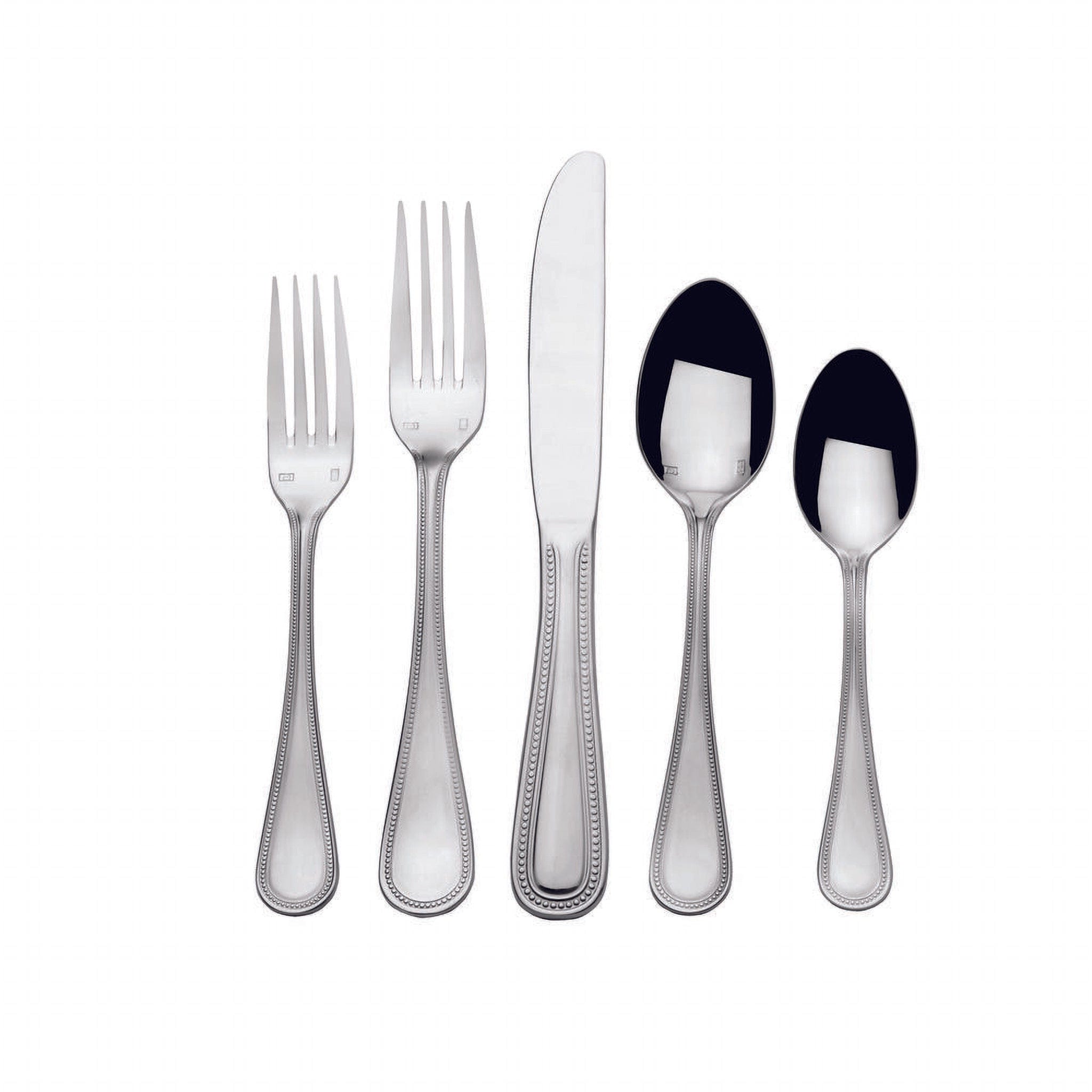
Handling:
Use of perforated cylinders in a portable rack reduce wear and tear on your flatware.
Sort your flatware tines, bowls and blades facing down in the cylinder when transporting, washing and holding in the same cylinder. This prevents contamination when the items are removed for setting the table.
Sort flatware tines, bowls and blades up when using a system where the flatware is transferred from a cleaning cylinder to a storage cylinder by inversion.
Rinsing + Washing:
Remove all remnants of food from flatware immediately after use. Avoid using steel wool or metal scrapers.
Do not soak flatware for a prolonged period of time or overnight.
Keep knives separate with the blades pointed down.
Avoid low-temperature dishwashing. It is not suited for stainless flatware.
Always make sure your flatware is clean and dry before storing to avoid corrosion and oxidation marks.
Handling:
Use of perforated cylinders in a portable rack reduce wear and tear on your flatware.
Sort your flatware tines, bowls and blades facing down in the cylinder when transporting, washing and holding in the same cylinder. This prevents contamination when the items are removed for setting the table.
Sort flatware tines, bowls and blades up when using a system where the flatware is transferred from a cleaning cylinder to a storage cylinder by inversion.


Glass
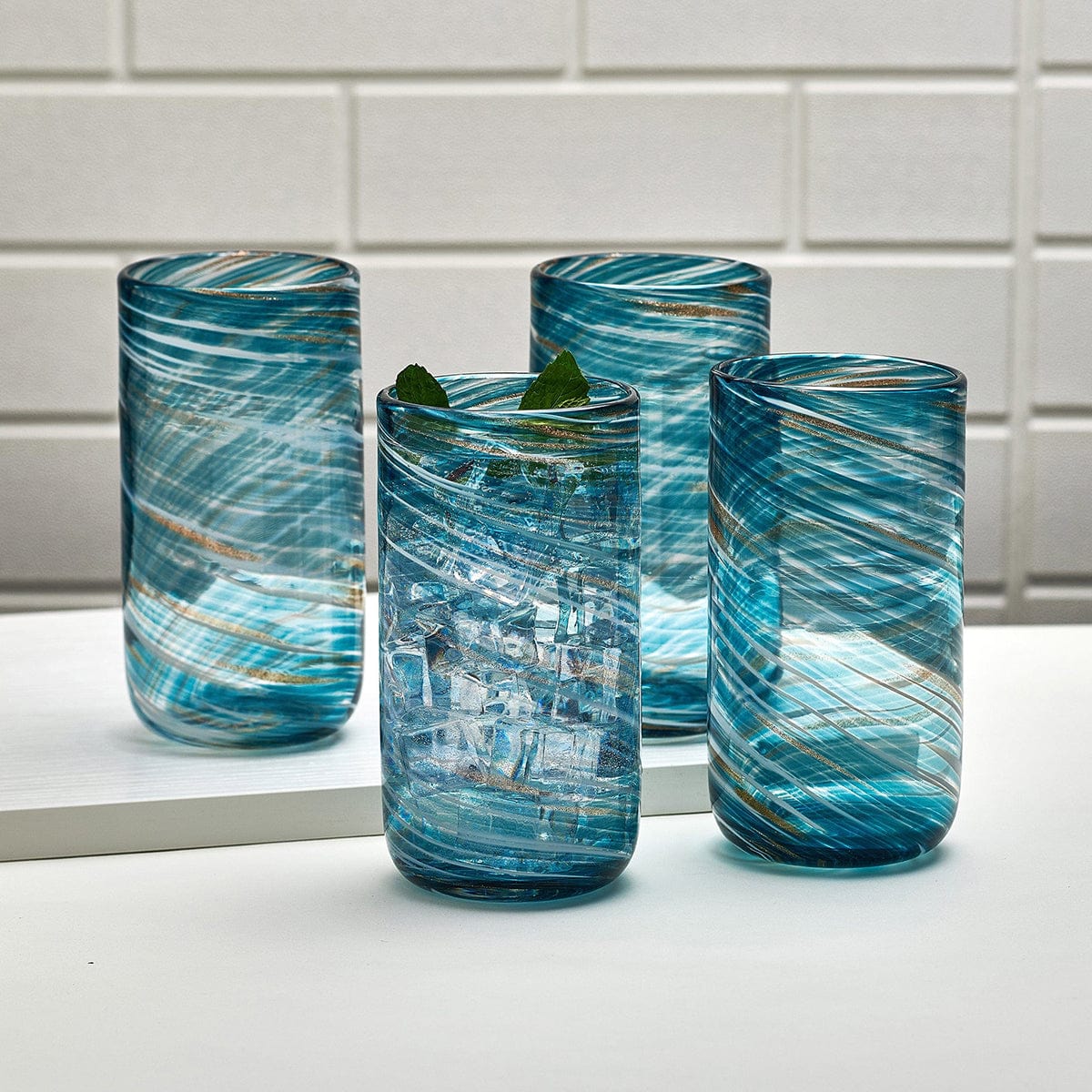
Rinsing + Washing:
Do not twist the bowl in one direction and the stem in another. This will put pressure on the glass and may cause it to crack or break.
Do not store or dry your glassware upside down. This puts pressure on the delicate glass rim and can cause breakage.
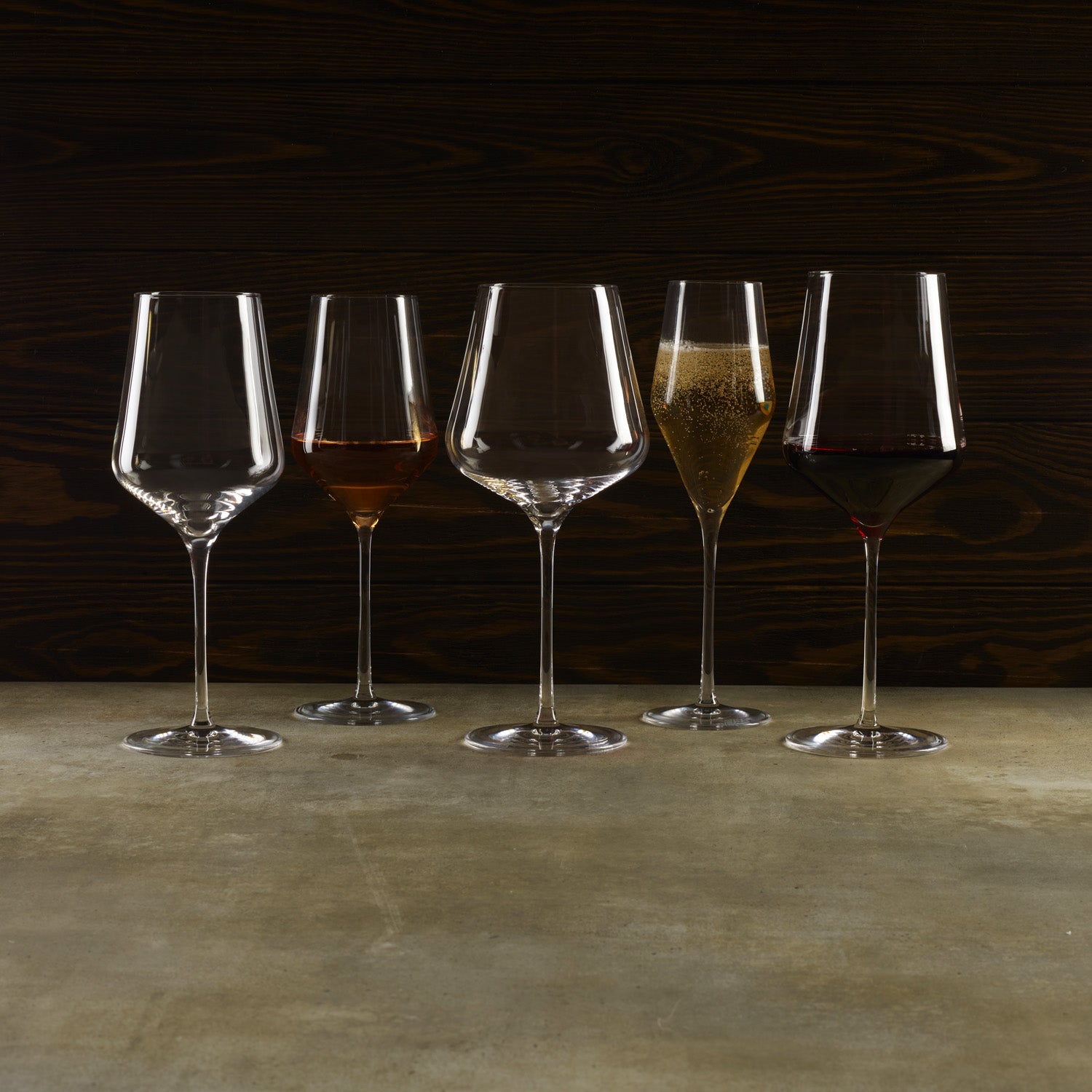
Handling:
Avoid storing or keeping wine or other colored liquids in glass as it may stain.
Should stains develop, rinse with 1 part water and 1 part vinegar to gently remove stains.
To get the longest use out of your glassware have a large back up supply of glasses. This allows them to be in service and be cleaned and dried naturally before going back into service.
Recently washed glasses should have time to self cool to room temperature to prevent shocking the glass and causing it to crack.
Make sure you have the correct rack system in place to hold and store your fine glassware.
Do not grab glasses by several bowls at one time. This puts undo pressure on the glass and overtime can cause scratching and breakage.
Only glasses marketed as stacking should be stacked. You risk breakage if you stack non stackable glassware.
Avoid thermal shock by assuring that your glasses are at room temperature before adding ice to the glass.
Rinsing + Washing:
Do not twist the bowl in one direction and the stem in another. This will put pressure on the glass and may cause it to crack or break.
Do not store or dry your glassware upside down. This puts pressure on the delicate glass rim and can cause breakage.
Handling:
Avoid storing or keeping wine or other colored liquids in glass as it may stain.
Should stains develop, rinse with 1 part water and 1 part vinegar to gently remove stains.
To get the longest use out of your glassware have a large back up supply of glasses. This allows them to be in service and be cleaned and dried naturally before going back into service.
Recently washed glasses should have time to self cool to room temperature to prevent shocking the glass and causing it to crack.
Make sure you have the correct rack system in place to hold and store your fine glassware.
Do not grab glasses by several bowls at one time. This puts undo pressure on the glass and overtime can cause scratching and breakage.
Only glasses marketed as stacking should be stacked. You risk breakage if you stack non stackable glassware.
Avoid thermal shock by assuring that your glasses are at room temperature before adding ice to the glass.


Tritan

Rinsing + Washing:
Treat melamine as you would fine china.
Melamine is commercial dishwasher safe.
Do not let food sit and dry on melamine, overtime it will dull the surface. Proteins will build up making the surface appear discolored.

Handling:
Do not expose melamine to direct heat over 200 degrees.
Avoid using warming lamps or other kitchen hear sources to keep food hot on melamine surfaces.
Avoid banging the plates on the corner of a table to remove leftovers.
Wipe leftovers off the surface with a rag to extend the life of
your melamine
Rinsing + Washing:
Treat melamine as you would fine china.
Melamine is commercial dishwasher safe.
Do not let food sit and dry on melamine, overtime it will dull the surface. Proteins will build up making the surface appear discolored.
Handling:
Do not expose melamine to direct heat over 200 degrees.
Avoid using warming lamps or other kitchen hear sources to keep food hot on melamine surfaces.
Avoid banging the plates on the corner of a table to remove leftovers.
Wipe leftovers off the surface with a rag to extend the life of
your melamine




